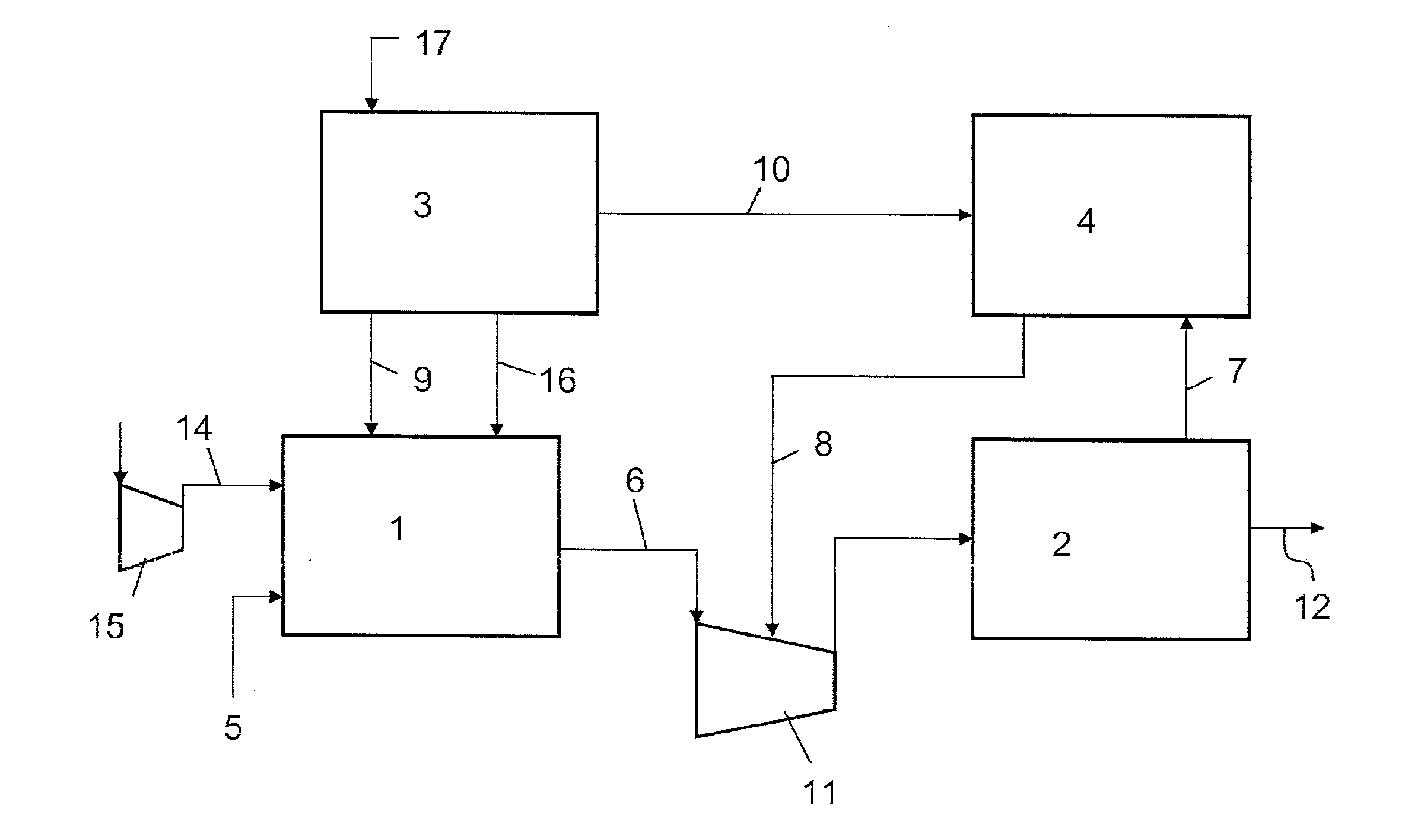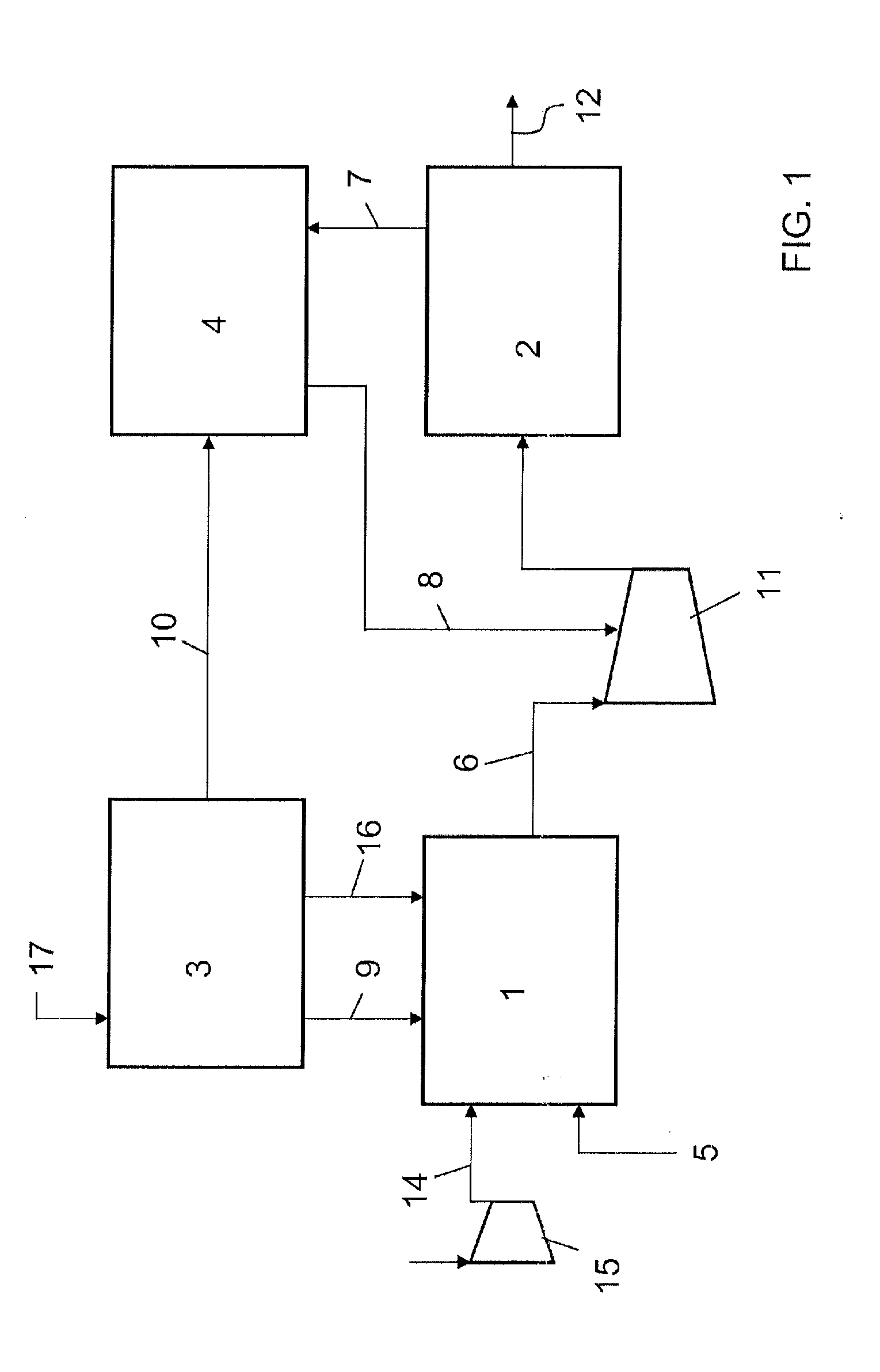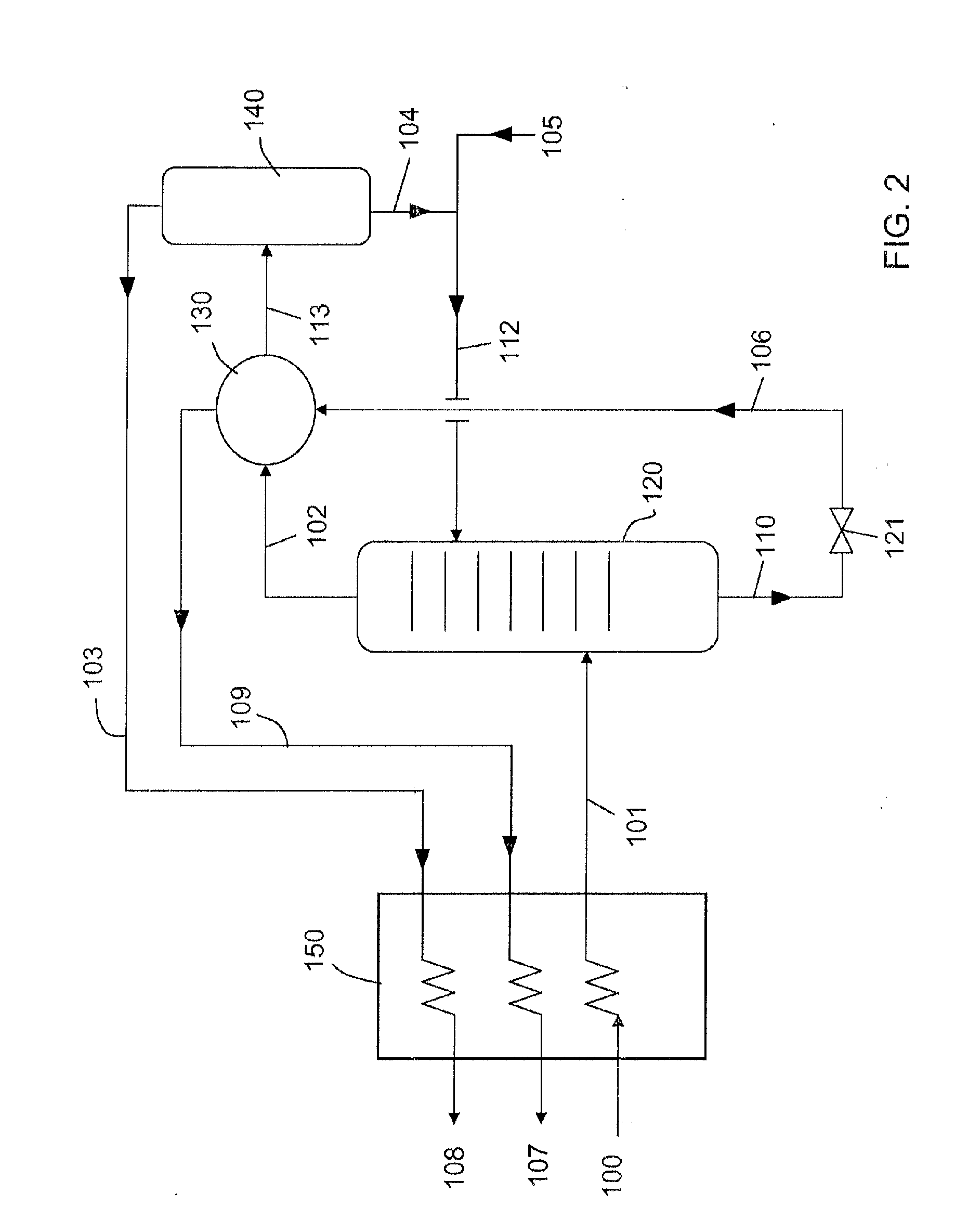Process for revamping an ammonia plant with nitrogen-based washing of a purge stream
- Summary
- Abstract
- Description
- Claims
- Application Information
AI Technical Summary
Benefits of technology
Problems solved by technology
Method used
Image
Examples
example 1
[0060]The numerals in the following example relate to FIG. 1. A conventional ammonia plant is revamped by installation of the ASU 3 providing the oxygen stream 9 and the nitrogen stream 10 used to wash the purge gas. The following can be noted: the ammonia output (stream 12) is increased by 14% while air feed 14 to the air compressor decreases by 11%; the total oxygen feed to the secondary reformer however is increased by around 37%, as the air feed 14 contains 21% oxygen while the stream 9 is 95% oxygen. Table 1c discloses detailed composition of streams in FIG. 1 (revamped case).
TABLE 1a(base case)Stream591412Vapour Fraction1.00—1.000.08(mole)Temperature° F.76.5—333.53.0Pressurepsig630.80—493.1017.26Molar Flowlbmole / hr4185.0—5840.08791.3Mass Flowlb / hr69206.8—169153.9149716.3
TABLE 1b(revamped)Stream591412Vapour1.001.001.000Fraction(mole)Temperature° F.72.8104.0330.43.0Pressurepsig645.00522.14508.1517.26Molar Flowlbmole / hr4953.0618.05200.010085.1Mass Flowlb / hr81907.219947.8150616.51...
example 2
[0061]The following table 2 relates to a plant as in FIG. 2, where purge gas 100 containing around 66% hydrogen and 21.5% nitrogen, plus a 6.4% methane and 5.8% Argon, is treated in a cryogenic section obtaining a methane-free recycle stream 108, containing around 70% hydrogen and 28% nitrogen.
TABLE 2Stream100101102103104Vapour Fraction (mole)1.000.951.001.000.00Temperature° F.14.0−239.7−266.7−277.0−277.0Pressurepsig1976.671975.67900.00900.00900.00Molar Flowlbmole / hr1384.11384.11542.81278.1264.7Mass Flowlb / hr14884.814884.819336.312648.46687.9Composition% molH2 66.092% 66.092% 60.446% 70.245% 13.139%N221.586%21.586%37.589%28.541%81.272%CH46.473%6.473%0.001%—0.004%Ar5.848%5.848%1.964%1.214%5.585%Stream105106107108Vapour Fraction (mole)0.000.261.001.00Temperature° F.−240.0−294.4−22.0−44.0Pressurepsig900.0029.0128.01899.00Molar Flowlbmole / hr198.4304.5304.51278.1Mass Flowlb / hr5558.27794.97794.912648.4Composition% molH2—5.584%5.584%70.245%N2100.000%43.504%43.504%28.541%CH4—29.427%29.4...
example 3
[0062]The following table 3 relates to a plant as in FIG. 3, where tail gas 100a containing around 15% hydrogen and 48% nitrogen, is treated in the cryogenic section. The obtained recycle stream 108 contains around 42% hydrogen and 56% nitrogen.
TABLE 3Stream100a101102103104Vapour Fraction (mole)1.000.971.001.000.00Temperature° F.122.0−194.6−248.7−264.3−264.3Pressurepsig901.45900.00435.11435.11435.11Molar Flowlbmole / hr557.0557.0553.9170.0383.9Mass Flowlb / hr12585.512585.512962.92915.110047.8Composition% molH214.542%14.542%18.758%42.334%8.319%N248.474%48.474%79.002%56.492%88.970%CH425.314%25.314%0.009%0.002%0.012%Ar11.670%11.670%2.231%1.172%2.699%Stream105106107108Vapour Fraction (mole)0.000.431.001.00Temperature° F.−234.4−288.596.750.0Pressurepsig454.3326.1123.21433.66Molar Flowlbmole / hr44.1431.1431.1170.0Mass Flowlb / hr1235.110906.910906.92915.1Composition% molH2—2.096%2.096%42.334%N2100.000%50.582%50.582%56.492%CH40.000%32.704%32.704%0.002%Ar0.000%14.618%14.618%1.172%
[0063]In the abo...
PUM
| Property | Measurement | Unit |
|---|---|---|
| Molar density | aaaaa | aaaaa |
| Fraction | aaaaa | aaaaa |
| Fraction | aaaaa | aaaaa |
Abstract
Description
Claims
Application Information
 Login to View More
Login to View More - R&D
- Intellectual Property
- Life Sciences
- Materials
- Tech Scout
- Unparalleled Data Quality
- Higher Quality Content
- 60% Fewer Hallucinations
Browse by: Latest US Patents, China's latest patents, Technical Efficacy Thesaurus, Application Domain, Technology Topic, Popular Technical Reports.
© 2025 PatSnap. All rights reserved.Legal|Privacy policy|Modern Slavery Act Transparency Statement|Sitemap|About US| Contact US: help@patsnap.com



